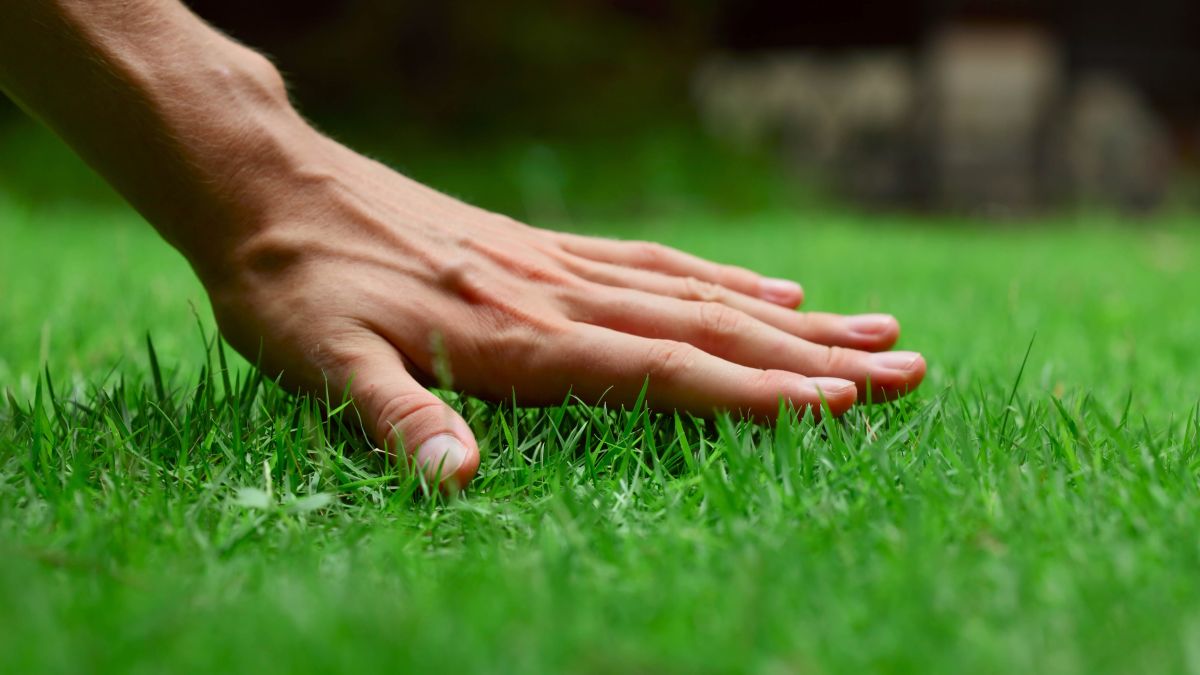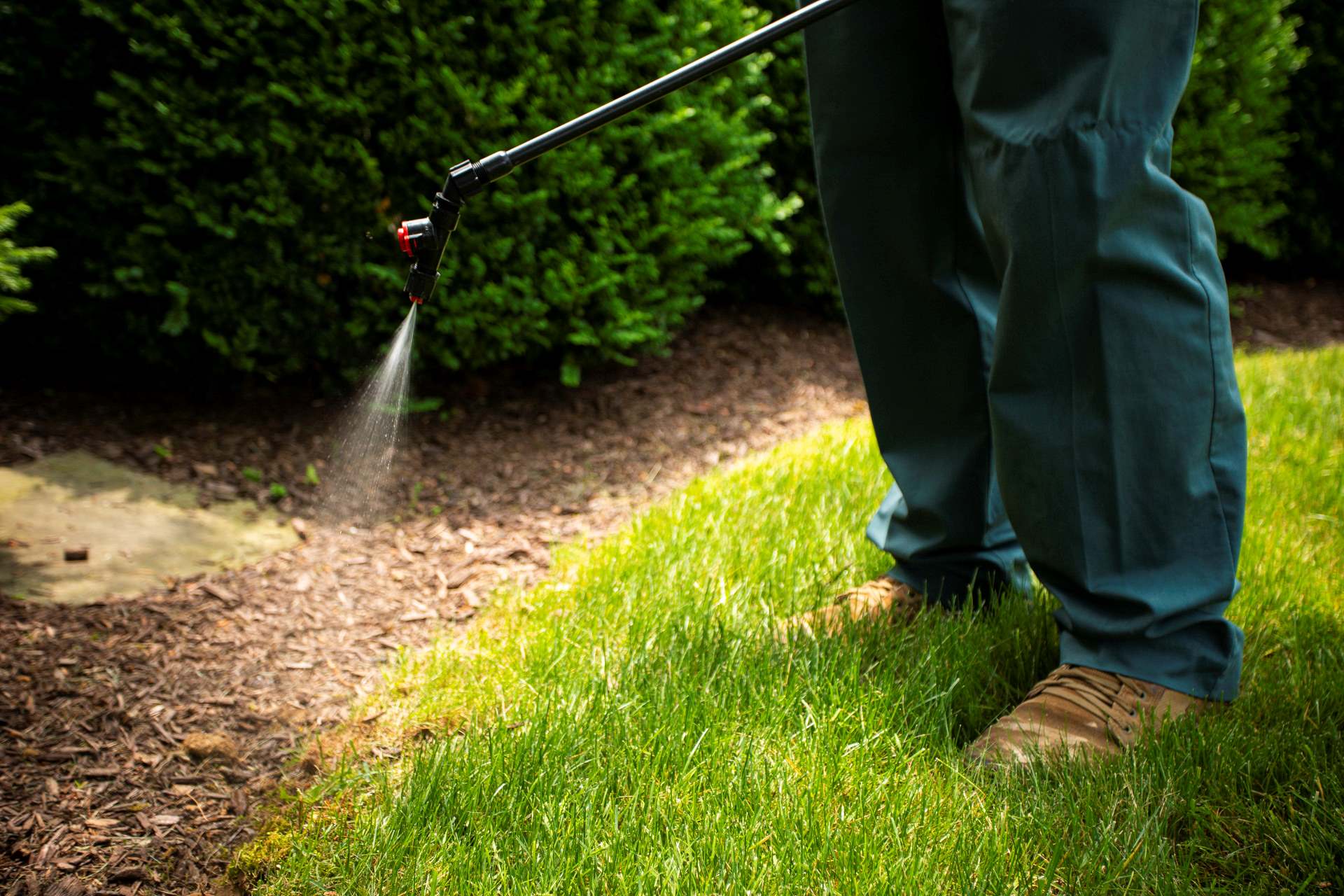Home>Gardening News and Trends>Latest News>What Is The Green Stuff They Spray On Weeds


Latest News
What Is The Green Stuff They Spray On Weeds
Modified: January 22, 2024
Discover the latest news on what the green stuff they spray on weeds is. Uncover the mysteries behind weed control methods and stay informed on the latest trends.
(Many of the links in this article redirect to a specific reviewed product. Your purchase of these products through affiliate links helps to generate commission for Chicagolandgardening.com, at no extra cost. Learn more)
Table of Contents
Introduction
Have you ever wondered what that green spray is that professionals use to eliminate weeds? It seems to magically zap those unsightly plants, leaving your lawn looking pristine and weed-free. But what exactly is this mystical substance and how does it work?
Well, you’re in the right place. In this article, we’ll explore the fascinating world of the green spray and unravel its secrets. We’ll delve into its purpose, types, effectiveness, and even its impact on the environment. By the end, you’ll have a better understanding of this powerful tool in the battle against weeds.
Weeds can be a nuisance, taking over your lawn, garden, or driveway, and spoiling the overall aesthetics of your outdoor space. While manual removal is an option, it can often be time-consuming and ineffective, especially when dealing with a large area. This is where the green spray comes into play.
This powerful herbicide is specially formulated to target and eliminate unwanted vegetation, including weeds. Applied in a liquid form, the green spray contains active ingredients that penetrate the plants’ cells, interfering with their growth and ultimately leading to their demise. Whether it’s dandelions, clover, or any other persistent weeds, the green spray is designed to tackle them head-on.
Now, let’s take a closer look at the different types of green sprays available in the market and how they work their magic.
Definition and Purpose of the Green Spray
The green spray, also known as herbicide or weed killer, is a chemical substance used to control and eliminate unwanted vegetation, particularly weeds. It is formulated with specific active ingredients that target plant cells, disrupting their growth and ultimately causing their death.
The main purpose of the green spray is to provide an effective and efficient solution for weed control. Weeds can be a nuisance, competing with desirable plants for water, sunlight, and nutrients. They can also damage structures and pavement, affecting the overall appearance of an area. The green spray offers a convenient way to address these issues, providing a targeted approach to weed management.
There are different types of green sprays available, each designed to target specific types of weeds or suit different environments. Some green sprays are designed to be broad-spectrum, meaning they can effectively control a wide range of weeds. Others are more selective, targeting specific types of weeds while leaving desirable plants unharmed. The choice of green spray depends on the specific weed problem and the desired outcome.
In addition to weed control, the green spray can also be used for vegetation management in non-agricultural settings. For example, it can be used to clear unwanted growth along roadsides, railway tracks, and utility corridors. In these situations, the green spray helps maintain clear visibility and access while minimizing the need for manual labor and machinery.
It’s important to note that the green spray should be used responsibly and according to the manufacturer’s instructions. Overuse or misuse of herbicides can have negative impacts on the environment, including contamination of water sources and harm to non-target plants and wildlife. Therefore, it is crucial to follow proper application techniques and consider alternative methods of weed control when appropriate.
Now that we understand the definition and purpose of the green spray, let’s explore the different types of green sprays available and how they effectively combat weeds.
Types of Green Sprays
When it comes to green sprays for weed control, there are various types available in the market. These different formulations cater to specific weed problems and environmental considerations. Let’s take a closer look at some of the common types of green sprays:
- Contact Herbicides: Contact herbicides are weed killers that work upon direct contact with the plant’s foliage. They are usually non-selective, meaning they can kill a wide range of plants upon contact. These types of green sprays are quick-acting and are effective on annual weeds. However, they may not be as effective on perennial weeds, as they only kill the top growth and may not reach the plant’s roots.
- Systemic Herbicides: Systemic herbicides are absorbed by the plant’s foliage or roots and then translocate throughout the plant’s vascular system. This type of green spray provides a more thorough and long-lasting control of weeds. Systemic herbicides are effective on a wide range of weeds, including both annual and perennial varieties. They target the entire plant, killing both the foliage and root system.
- Selective Herbicides: Selective herbicides are formulated to target specific types of weeds while sparing desirable plants. They are often used in lawns and gardens, where controlling weeds without harming grass or other wanted vegetation is crucial. Selective green sprays work by targeting certain enzymes or growth hormones unique to the weeds, leaving the desired plants unharmed.
- Pre-emergent Herbicides: Pre-emergent herbicides are applied before the weeds germinate. They create a barrier in the soil, preventing weed seeds from sprouting. Pre-emergent green sprays are beneficial for long-term weed control, as they inhibit weed growth right from the start. They are commonly used on lawns, gardens, and agricultural fields.
- Post-emergent Herbicides: Post-emergent herbicides are applied to actively growing weeds. They are designed to target and kill weeds that have already sprouted. Post-emergent green sprays provide a targeted approach, allowing for selective control of specific weed species without harming desirable plants. They are commonly used in lawn care and landscaping.
It is important to choose the right type of green spray based on your specific weed problem, the area you want to treat, and any environmental considerations. Consulting with a professional or doing thorough research can help you select the most suitable green spray for your needs.
Now that we’ve explored the different types of green sprays, let’s delve into how they work their magic to eliminate weeds effectively.
How Does the Green Spray Work?
The green spray, also known as a weed killer or herbicide, works by targeting specific processes or enzymes within plants, ultimately leading to their elimination. The exact mechanism of action may vary depending on the type of green spray used, but here’s a general overview of how it works:
When you apply the green spray to the foliage of weeds, it adheres to the plant’s surface and is absorbed. The active ingredients within the green spray then start to penetrate the plant’s cells, disrupting vital processes.
One common mode of action for green sprays involves inhibiting an enzyme called acetolactate synthase (ALS). This enzyme is essential for the production of specific amino acids necessary for plant growth. By inhibiting ALS, the green spray prevents the weeds from synthesizing these amino acids, leading to their eventual death.
Systemic herbicides work differently. Once absorbed by the plant, they are translocated throughout the plant’s vascular system, reaching all parts of the plant, including the roots. This is particularly effective for perennial weeds, as it can kill both the top growth and the underground root system.
Another mechanism of action involves disrupting cell membranes within the plant, leading to leakage and loss of crucial water and nutrients. This can cause desiccation or starvation of the weed, resulting in its demise.
It’s important to note that green sprays are designed to be selective or non-selective. Selective herbicides specifically target certain types of plants, such as broadleaf weeds, while leaving desirable plants unharmed. Non-selective herbicides, on the other hand, will kill any plant it comes into contact with. Careful consideration should be taken when choosing a green spray to avoid damaging desirable vegetation.
Timing is also crucial when applying green sprays. Some herbicides are more effective when applied to young, actively growing weeds, while others are more effective on mature weeds. Following the instructions provided by the manufacturer and carefully adhering to recommended application rates and timing can help maximize the effectiveness of the green spray.
Now that we understand how the green spray works to combat weeds, let’s explore the potential environmental impact of using these herbicides.
Environmental Impact of the Green Spray
While the green spray can be highly effective in controlling weeds, it is important to consider its potential impact on the environment. Here are some key factors to keep in mind:
Contamination of Water Sources: Improper use or overapplication of green sprays can lead to the contamination of water sources. Rainfall or irrigation can wash away the chemicals, carrying them into streams, rivers, and groundwater. This can harm aquatic ecosystems and potentially impact drinking water supplies. It is crucial to follow label instructions and local regulations to minimize this risk.
Non-Target Plant Damage: Non-selective green sprays can harm desirable plants if not applied carefully. Spray drift or accidental overspray can damage nearby vegetation, including lawns, flowers, and shrubs. It is essential to take precautions, such as using shields or barriers, to prevent unintended damage to non-target plants.
Impact on Pollinators and Wildlife: Green sprays, especially those containing glyphosate, have been a topic of concern due to their potential effects on pollinators and wildlife. Studies have shown that glyphosate can negatively affect beneficial insects like bees and butterflies, which are crucial for pollination. To protect these important species, consider using alternative methods of weed control or opting for selective herbicides that pose minimal risk to pollinators.
Persistent Organic Pollutants: Some green sprays contain chemicals that are classified as persistent organic pollutants (POPs). These substances can persist in the environment for long periods and bioaccumulate in the food chain, potentially causing harm to wildlife and humans. It is essential to choose green sprays that have lower environmental persistence and toxicity profiles.
Residual Effects: Certain green sprays can have residual effects, meaning they can remain in the soil for an extended period. This can affect the growth of desirable plants, even if they are planted after the application of the herbicide. It is crucial to be aware of the persistence of the green spray and plan accordingly when considering re-planting or establishing new vegetation.
To minimize the environmental impact of using green sprays, consider adopting integrated weed management practices. This includes combining different techniques such as manual weeding, mulching, mowing, and targeted herbicide application. By diversifying the approach, you can reduce chemical usage and protect the environment.
Now let’s explore some alternative methods to control weeds without relying solely on green sprays.
Alternatives to Using the Green Spray
While the green spray can be effective in managing weeds, there are alternative methods available that can reduce reliance on chemical herbicides. These alternatives provide a more environmentally friendly approach to weed control. Here are some options to consider:
Manual Weed Removal: One of the simplest and most eco-friendly methods of weed control is manual removal. This involves physically pulling or digging out the weeds from the root. It may require some effort, but it is an effective way to target specific weeds without the use of chemicals. Regular maintenance and diligence are key to prevent weed regrowth.
Mulching: Mulching is a practical and sustainable way to suppress weed growth. By covering the soil with a layer of organic mulch, such as wood chips or straw, you create a barrier that prevents sunlight from reaching weed seeds. This helps to smother existing weeds and inhibit the germination of new ones. Additionally, mulch helps retain moisture in the soil and improves its overall health.
Proper Lawn and Garden Care: Maintaining a healthy lawn and garden can help prevent weed infestations. This includes practices such as regular mowing, proper irrigation, and fertilization. By promoting a thick and healthy turf or plant cover, you can effectively crowd out weeds and minimize their establishment.
Heat Treatment: Heat treatment is a non-chemical method that uses high temperatures to kill weeds. This can be done with specialized equipment that applies heat directly to the weed, causing cell damage and death. Heat treatment is effective for spot treatment of weeds in areas where chemical herbicides may not be suitable, such as near water sources or sensitive plants.
Biological Control: Biological control involves using living organisms, such as beneficial insects or pathogens, to control weeds. This method is targeted and environmentally friendly. For example, certain species of insects or fungi can be introduced to target and suppress specific weed species. However, biological control methods require careful evaluation and planning to ensure they do not have unintended ecological consequences.
Cultural Practices: Adjusting cultural practices can help prevent and reduce weed growth. This includes practices like crop rotation, intercropping, and proper spacing of plants. By implementing these practices, you can disrupt the life cycle of weeds and create unfavorable conditions for their establishment and spread.
It’s worth noting that a combination of these alternative methods may be necessary to effectively manage weeds. Integrated weed management seeks to utilize a range of approaches to address weed control in a holistic and sustainable way.
By reducing reliance on the green spray and adopting alternative methods, you can minimize the environmental impact while still effectively managing weeds.
Now that we’ve explored various alternatives to using the green spray, let’s summarize the key points of this article.
Conclusion
In conclusion, the green spray is a powerful tool for weed control, offering an efficient solution to manage unwanted vegetation. Whether you opt for contact herbicides, systemic herbicides, selective herbicides, pre-emergent herbicides, or post-emergent herbicides, there are various options available to suit specific weed problems and environmental considerations.
While the green spray can be effective, it is crucial to be mindful of its potential environmental impact. Contamination of water sources, non-target plant damage, negative effects on pollinators and wildlife, persistent organic pollutants, and residual effects are some of the factors to consider. Responsible usage and adherence to label instructions can help minimize these risks.
Fortunately, there are alternatives to the green spray that provide more environmentally friendly methods of weed control. Manual weed removal, mulching, proper lawn and garden care, heat treatment, biological control, and cultural practices offer effective and sustainable approaches to manage weeds without relying solely on chemical herbicides. Integrating these methods can help reduce chemical usage and protect the environment.
When it comes to weed control, it’s important to consider the specific weed problem, the area being treated, and environmental factors. Consulting with professionals and following best practices in weed management can help ensure effective control while minimizing the impact on the environment.
So, the next time you spot those pesky weeds taking over your outdoor space, consider the various options available to you, from the powerful green spray to the more sustainable alternatives. With careful consideration and responsible use, you can maintain a weed-free environment while protecting the beauty and balance of nature.




